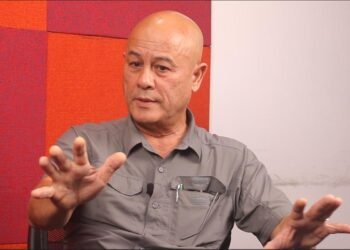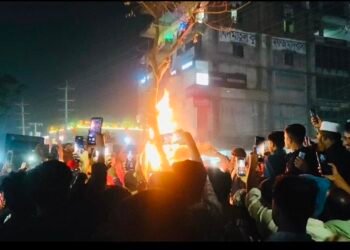A new border management system, replacing the Free Movement Regime, has triggered discontent in Mizoram. ZORO, representing Mizo tribes across India, Myanmar, and Bangladesh, has condemned the system requiring residents within 10 km of the border to obtain passes for cross-border visits
BY PC Bureau
The Zo Re-Unification Organization (ZORO) has announced plans for statewide demonstrations in Mizoram on January 29 to protest against the alleged discontinuation of the Free Movement Regime (FMR) and the introduction of a new border pass system along the Indo-Myanmar border. Representing ethnic Zo or Mizo tribes across India, Bangladesh, and Myanmar, ZORO voiced its concerns during a meeting chaired by its president, R. Sangkawia. Key issues discussed included the scrapping of the FMR, border fencing, and the deportation of Bangladeshi refugees from Mizoram, according to the organization’s general secretary, L. Ramdinliana Renthlei.
The protests will involve burning copies of government notifications related to the FMR’s removal and the implementation of the border pass system. ZORO also issued a statement urging the Central Government to revoke the notification suspending the FMR and to restore the earlier visa-free movement arrangement, which allowed people within 16 kilometers of the border to travel freely for short stays.
<blockquote class=”twitter-tweet”><p lang=”en” dir=”ltr”>The Zo Re-Unification Organization (ZORO) has announced plans to stage demonstrations across Mizoram on January 29 against the alleged scrapping of the Free Movement Regime (FMR) and the introduction of a new border pass system along the Indo-Myanmar border. <a href=”https://t.co/CksBh0DQkB”>pic.twitter.com/CksBh0DQkB</a></p>— Jon Suante (@jon_suante) <a href=”https://twitter.com/jon_suante/status/1880508972526100697?ref_src=twsrc%5Etfw”>January 18, 2025</a></blockquote> <script async src=”https://platform.twitter.com/widgets.js” charset=”utf-8″></script>
ZORO has criticized the Ministry of Home Affairs (MHA) for replacing the FMR with a new border management system effective from January 1. The new system mandates a “border pass” for residents within a 10-kilometer radius on either side of the India-Myanmar border, valid for stays up to seven days. To obtain the pass, individuals must provide proof of residence issued by local authorities such as police officers, village chiefs, or administrators. The MHA guidelines specify regulated movement through 18 entry/exit points along the Mizoram-Myanmar border, with pilot sites in Champhai district and phased implementation in other districts.
The organization also condemned the alleged deportation of 28 refugees from Bangladesh’s Chittagong Hill Tracts (CHT) who entered Mizoram’s Lawngtlai district on January 5. ZORO claimed these refugees were detained by security forces and subsequently sent back to Bangladesh on January 11 following arrangements made by the state government and Assam Rifles.
Sangkawia alleged that the Ministry of Home Affairs (MHA) recently replaced the Free Movement Regime (FMR) with a new system aimed at regulating movement across the India-Myanmar border. According to him, the new system, effective from January 1, requires residents living within 10 kilometers on either side of the border to obtain a “border pass” to visit the other side. This pass allows a stay of up to seven days and is issued by the Assam Rifles.
To obtain the pass, individuals must provide proof of residence within the 10-kilometer radius, supported by documents issued by local authorities such as a police officer-in-charge, village chief, or village administrator.
Sangkawia further stated that, in a letter to Mizoram’s chief secretary dated December 24, the MHA outlined plans for regulated entry through 18 designated points along the Mizoram-Myanmar border. The Zokhawthar and Hnahlan crossing points in Champhai district are to serve as pilot sites, with three additional points in Lawngtlai district being established in Phase I. The remaining 13 points, distributed across six border-sharing districts, will be implemented in Phase II.
The MHA has already clarified that cross-border movement for border residents from both countries would be permitted for specific purposes such as visiting relatives, tourism, business, medical treatment, and cultural exchanges.
The Modi government ended the Free Movement Regime to thwart the conspiracy to change the demography of Manipur. pic.twitter.com/KwONIzjYDm
— Amit Shah (@AmitShah) April 15, 2024
Mizoram’s apex student body, Mizo Zirlai Pawl (MZP), announced its intention to formally petition the Central Government against the discontinuation of the FMR.
The FMR, which was officially suspended in February 2024, previously allowed residents within 16 kilometers of the border to cross freely without a visa. Under the FMR, Indian citizens could stay in Myanmar for up to 72 hours, while Myanmar citizens were permitted to stay in India for 24 hours. Its suspension, aimed at enhancing border security and addressing issues like illegal immigration, drug trafficking, and arms smuggling, marked a significant policy shift.
In addition to implementing the new border pass system, India has initiated plans for a comprehensive border management strategy along its northeastern frontier with Myanmar. This includes constructing a 1,643-kilometer smart fence equipped with advanced surveillance technologies to monitor unauthorized movements and building a 10-kilometer border barrier in Moreh, Manipur. These measures are designed to replace the FMR with a more secure and controlled system of cross-border movement.













